With the right slogan, you can make people giggle at a pun, ponder the mysteries of the universe, or even experience a powerful craving. A poor slogan, on the other hand, risks making customers cringe. And forking over cash is usually the last thing someone wants to do after cringing.
This post will give you a 5-step guide to writing great slogans. So whether you need a brand new idea or you’re refining an existing slogan, you’ll be in business. Let’s get started!
Related: Learn more about the 10 assets you need to effectively manage your brand online in our free eBook.
1. Make your slogan ABC: Ambitious But Credible
Believability is the first test of a good slogan, because a customer’s belief or lack thereof largely determines how he or she will respond, and that response could very well be the difference between buying and walking away. No matter how much fun your slogan is to say, or how good it looks next to your logo, it won’t do any good if your customers don’t believe it. []
For example, Nike’s command to “find your fast” comes across as completely believable. While having the right equipment isn’t the only factor in athletic success, it is a factor. Slogans like this one invite consumers to put their trust in a brand, which is a big plus.
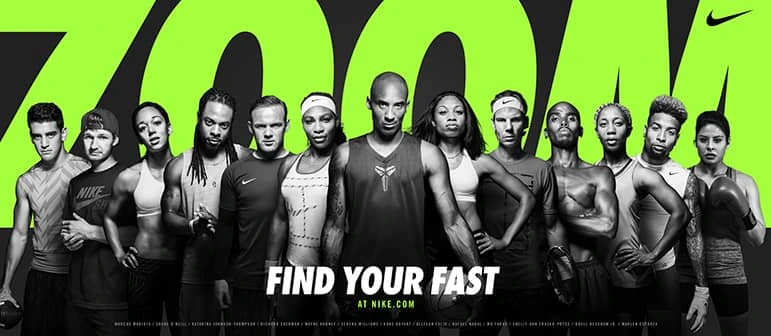
Some key questions to ask about your slogan:
- Do I believe it?
- Is there good reason for my customers to believe it?
- Does it set a high standard for the product?
2. Appeal to emotional needs
Making a purchase is often an emotional experience. If a slogan can incite a strong positive emotion (think joy, excitement, sympathy, etc.), it stands a better chance of connecting people with the products and services that aim to fill those needs.
For example, major hotel chains go out of their way to convey comfort: Hilton claims to be “filling the earth with light and warmth of hospitality,” while Aston bids “welcome home” to each traveler who sets foot on their premises.
You can also tug at the heart strings without being sappy. When Kleenex launched a video ad about a boy who gives a tissue to a girl he spots crying on the school bus, the closing observation that “someone needs one” positioned Kleenexes as the universal response to tears everywhere.
Questions to consider about your slogan:
- What emotions does it invoke?
- Which of my target audience’s needs does it relate to?
3. Stand out with clever wordplay
Your slogan ought to be tricky or clever enough to make most readers think about your slogan for a minute or two, which makes it more likely that they’ll remember it. If it’s too tricky, however, it can go right over their heads and leave them confused.
There’s no easy way to come up with a clever saying, but you can start by listing words that have to do with your product, then searching for rhymes, synonyms, and alternate definitions for puns.
Those aren’t the only ways to make your slogan stand out—in fact, sounding too catchy in a clichéd way could be counterproductive. Reese’s “two great tastes that taste great together” follows an A-B-B-A structure that, intentionally or not, imitates the peanut-butter filled structure of the candy itself.
Nor does it have to be complicated to sound good. “Ace is the place with the helpful hardware folks” isn’t just easy on the tongue; it’s also a straightforward slogan that goes well with the down-to-earth nature of hardware stores.
Ask yourself:
- Are consumers likely to understand the slogan’s wordplay?
- Does the cleverness of the slogan distract from or reinforce its overall message and effect?
4. Just say no to clichés and superlatives
How do you know when you’ve crossed the line from catchy to corny?
If people can sarcastically cite your slogan to disprove it when they experience setbacks, you’ve probably crossed that line. []
Another sign you may have gone too far is the use of tired clichés. Phrases such as “we do X so you don’t have to”; “for x, by x”; and “x of the future” are all used so frequently that consumers are used to tuning them out. If you really want to express the sentiment embodied in these phrases, find a unique way of doing so.
Some key questions to consider are:
- In what ways is my slogan different from most slogans?
- In what ways is it similar, possibly too similar, to most slogans?
- How likely are customers to roll their eyes at it?
5. Maintain a strong connection to your business
Can you match the following slogans to the product they represent?
1. Made like no otherA. beverages2. Rethink the daily grindB. women’s deodorant3. Live loudC. toilet paper4. Live life in full colourD. denture fixatives5. Bend the rulesE. 3D desktop scanners6. Designed to be forgottenF. ice cream
Having trouble making the connection? The point is that a slogan should strongly relate to the product it promotes. It if doesn’t, then it might catch people’s attention momentarily, but it won’t stay with them.
It’s best if there’s a strong, interesting link between your slogan and your product. For instance, Aquafina’s insistence that their water is “for happy bodies” makes good sense. Sunchips’ claim to be “unique in every wave” distinguishes their chips from their less curvy competitors. Finally, Paper & Packaging Board’s assertion that their products are at the heart of “how life unfolds” wouldn’t make much sense for, say, a burger stand.
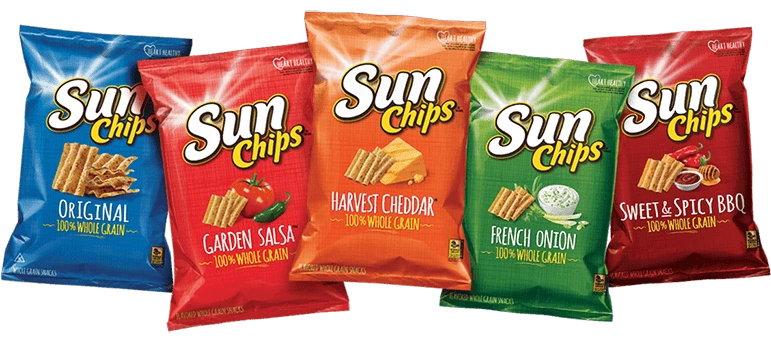
(And if you want to know the quiz answers, here they are: 1. F, 2. A, 3. D, 4. B, 5. E, 6. C.)
Congratulations! You made it through Business Slogans 101. Once you’ve written a killer slogan of your own, be sure to sell it visually as well as verbally. Lucidpress templates can help you incorporate your new slogan into all kinds of marketing materials: social media graphics, digital magazines, company newsletters, and much more.
I’ve been writing page titles incorrectly my entire career.
Google has provided best practices for constructing page titles, including:
- Describe the content on the page.
- Create unique title tags for each page.
- Use brief but descriptive titles.
These are all great practices to follow on every page of your site. But I’ve recently learned that there’s something else just as important as the best practices Google provides:
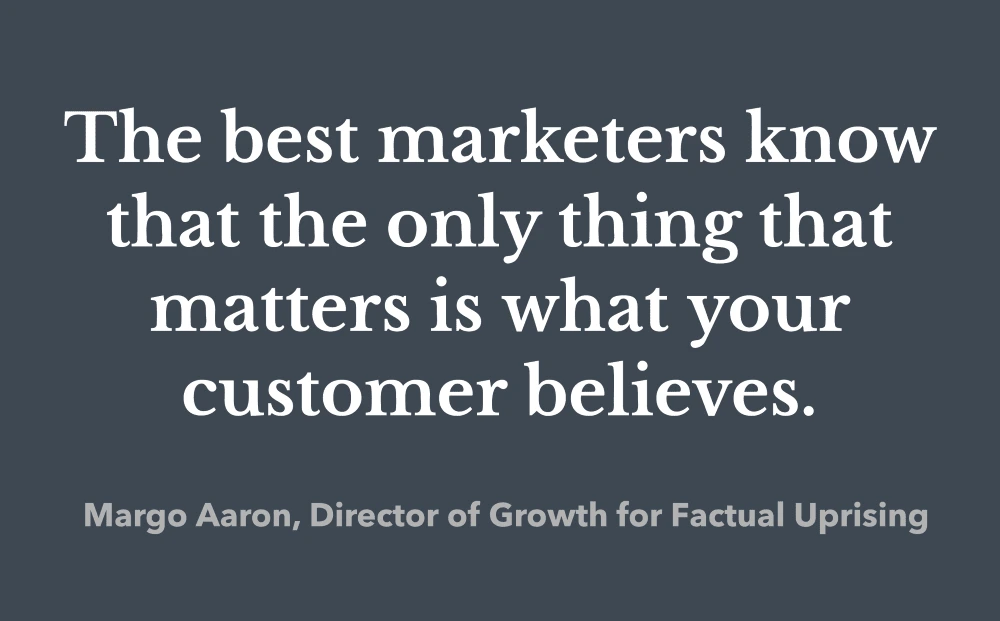
Don’t just optimize titles. Optimize thought sequences.
Your page title serves three primary purposes:
- To provide searchers with a description of your page.
- To provide Google with information that helps it determine how relevant your page is to a search query.
- To provide messaging to searchers that drives them to click on your result.
Succeeding in this final purpose will determine whether your pages achieve click-through rates that outperform average rates in Google. With page titles, I found an easy technique for presenting the right messaging to searchers: brand positioning.
Related: 8 best practices of high-converting websites
Why brand positioning?
Phillip Kotler, Professor of International Marketing at Northwestern University, defines brand positioning as “the art of designing the company’s offering and image to occupy a distinctive place in the target market’s mind.”
Occupying a space in the searcher’s mind is how you compel them to click on your result instead of your competitors’.
A case study
Here’s an example from a page on our site targeting the keyword “ebook templates.”
The original title for our eBook templates page was the following:
Free eBook Templates & Examples | Lucidpress
This title follows Google’s best practices: it accurately describes the page, it’s unique, and it’s brief but descriptive.
It also meets the first two purposes of a page title: it provides searchers with a description of the page, and it provides Google with information to determine how relevant your page is to a search query.
What it lacked was messaging that compelled searchers to click on our link. Nothing in the original title helped “occupy a distinctive place in the target market’s mind.”
Our hypothesis was this: If we could help searchers imagine how our eBook templates would help them grow their brands, then we’d be able to compel them to click on our result over the others.
Keeping this brand positioning in mind, here’s the new title:
Free eBook Templates & Examples to Help Build Your Brand
The result: a 118% increase in the click-through rate for the keyword “ebook templates.”
Incorporate brand positioning into your page titles
To incorporate brand positioning into your page titles, I’ve found it helpful to create a brand positioning statement for each page:
Our [subject] page helps [the audience] [achieve a result] so they can [benefit].
In the example for our eBook template page, here’s the statement we came up with:
Our eBook templates page helps small business owners position themselves as an authority so they can grow their brands.
Bonus: The power of branding
According to Marty Neumeier, author of The Brand Gap: How to Bridge the Distance Between Business Strategy and Design: “Brand will become the most powerful strategic tool since the spreadsheet.”
Data from a study we conducted at Lucidpress with the global marketing research & advisory firm Demand Metric seems to back up this statement.
In this study, we found that the average revenue increase attributed to having a consistent brand is 23%.
[Click here to view our full report on how brand consistency can help drive your company’s growth.]
We also found that brands with consistent presentation are 3-4 times more likely to enjoy excellent brand visibility than inconsistent ones.
This is the power of branding—the ability to improve organic search performance for your website and drive revenue growth for your organization. Try it on your page titles to see if it holds true for you, too.
Next steps
Ready to create compelling page titles?
- Create brand positioning statements for your high-priority pages.
- Incorporate your positioning statements into your titles.
- Track changes in click-through rates and rankings using Google’s Search Console.
Feel free to leave a comment below and tell us how it went.
Learn more about how brand consistency impacts your business in our free report.
When done well, flyers can be an incredibly effective (and inexpensive) way to promote your business, no matter your size. In fact, 89% of folks remember receiving a flyer, more than any other form of advertising. What’s more, 45% hold onto the flyers they receive for future reference.
Still, while flyer distribution is one of the most widely used marketing strategies, simply copy and pasting something together isn’t enough to stand out in today’s busy marketplace. If you want to grab people’s attention long enough for them to actually read your flyer and then act on it, you’ll need to be intentional in your messaging, design, and distribution.
Below you’ll find our comprehensive guide to flyering. From how to design a flyer for maximum impact to tips on distribution, we’ll help you create the perfect piece of print marketing for your business.
How to design an incredible flier
1. Create an attention-grabbing focal point
What’s the first thing that you want people to notice? Intentionally designing your flyer around a singular focal point will catch people’s eye and make sure your message comes across loud and clear.
Using unique, professional imagery, bold colors, and easy-to-ready fonts will help you stick the landing.
For example, we love how this Cinco de Mayo flyer immediately draws your attention in with a beautifully drawn taco that conveniently tells you exactly what the flyer is about. Fun colors + a casual, handwritten lettering style make this super easy on the eyes and a joy to read.

2. Speak to your target audience
Who’s your target audience, and how do you want them to respond to your flyer? For example, you might want them to stop by your shop, visit your website, or call for more information.
Knowing your target audience will help you craft messaging that appeals directly to them.
The goals of this flyer’s messaging and design are clear:
- To highlight the event is one night only, so people should act now to buy tickets/mark their calendars
- To catch the attention of film and poster enthusiasts
- To establish legitmacy by including the names of well-known print artists who will be featured

3. Focus on the benefits
It’s not enough to grab your customer’s attention. You need them to stick around so you can convey your whole message. Keep them interested by rewarding their attention. Answer their main question, “What’s in it for me?”
4. Keep the content simple
When it comes to creating flyers that stand out, less is more. Remember that you only have a couple seconds to capture the attention of your potential customers, and only one or two more seconds to hook them in with your product. That’s why you need to be straight-to-the-point content when describing what your product/service/event is, its benefits and other important details.
This funky design let’s people know exactly what kind of guitar lessons are being offered, what level they’re for, and how to get in contact.
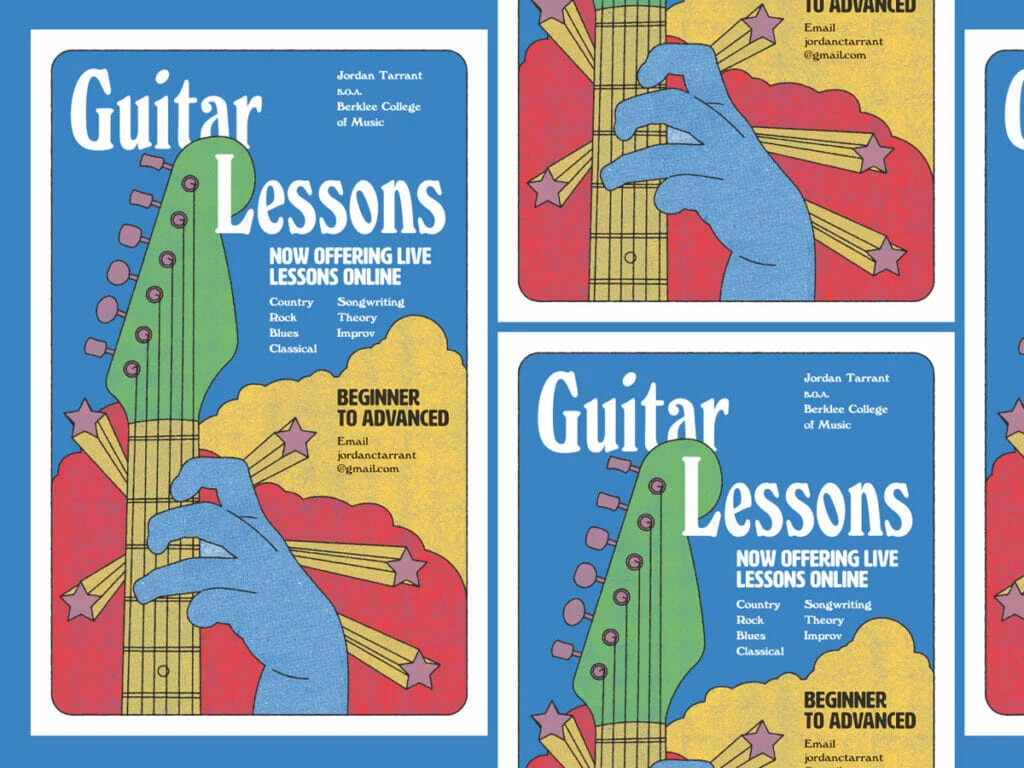
5. Include a call-to-action
After conveying your message, tell readers exactly what to do next, whether that’s to order now, call now, visit your website, etc. Get them excited about what they’ve learned on your flyer.
Be clear how you want them to interact with you by including important details about your business, like your website, contact info, location and more.
6. Print in high quality
Another vital element to creating attention-grabbing flyers is the final print. A quality print finish can be just as important as everything else you put on your flyer. Using a glossy finish and quality paper for your flyer creates a great first impression and can reflect the same quality of your products or services. Need a printer? Marq delivers high-quality prints of any design you create in our software.
7. Consider the impact of folds
Different folded finishes can create a unique impact and lasting impression. F Adding folds to your flyer will not only make it stand out but can also guide your audience through your intended information flow. Just remember to plan how you’re printing your flyer before you start with the design.
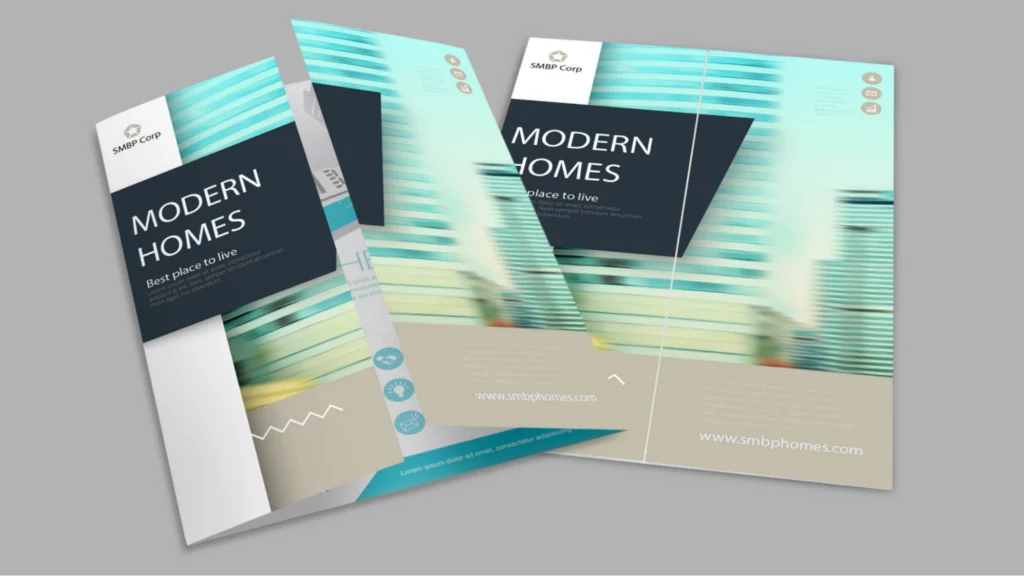
How to nail flyer distribution
Now that you’ve learned how to design a flyer, we want to make sure that flyer gets as much attention as possible. Design is only ‘half the battle’ so to speak – nailing your distribution strategy is key.
Here’s how to make sure your flyers get the attention they deserve:
1. Consider your timing.
We might be stating the obvious here, but flyers aren’t known for being particularly durable. If you’re hanging flyers outside, their lifespan could be substantially shortened by the elements. Before you get out the staple gun, check your local weather forecast for rain, snow, and heavy winds. If harsh weather is on the horizon, you might have to adjust your plans.
While we’re on the subject, take holidays into account as well. Around certain ones, like Halloween and Christmas, your flyer will be competing with a lot of decorations. Space might not be as readily available as it was before. That doesn’t mean you shouldn’t advertise around a holiday—especially if your message is seasonal or topical—but you should still take note.
2. Consider your distribution method.
How are your flyers getting to your intended audience? You have a few choices. The most popular methods are:
- Hanging the flyers in public/community areas.
- Handing the flyers to people directly.
- Keeping a stack of flyers in a high-traffic area.
- Delivering the flyers door-to-door (or car-to-car).
The method you choose will have critical ramifications on your distribution plan. For example, how many flyers will you need to accomplish your goal? How long will it take to get rid of them all?
No matter where you’re flyering, make sure you get the right permissions. Not all places that are open to the public are open to flyering as well. Parks have maintenance staff. Neighborhoods have soliciting policies. Storefronts and cafés have managers. Schools have approval forms.
Don’t give up hope, though. Many times, you can chat with property owners to determine whether they’re open to flyering. If you see shops with flyers already out front, that’s a good sign. Many places, like college campuses and laundromats, have corkboards especially for flyers and local ads. Take a look around, and don’t be afraid to ask!
3. Build your distribution team.
If you’re hanging or handing out flyers all by your lonesome, it’s going to be a long ride. Flyering moves much faster in a team. Fortunately, you can call on your support network for help. If you’re announcing a new store, employees can help. If it’s a party or a concert, you can recruit family and friends. If it’s a club or organization, it shouldn’t be hard to find volunteers.
The lower the quantity, the easier it will be to get all those flyers out into the world. However, if your back’s against the wall, you still have options. If you don’t have the time—and no one else seems to, either—give a flyering agency a call.
There are specialized businesses out there who take care of the entire distribution process, from start to finish. They can help you create a smart plan that targets your audience in a timely fashion. Some even offer GPS tracking so you can watch in real-time. Just keep in mind that you can’t control how the staff does its job, so choose your agency partner carefully.
4. Target your distribution.
Finally, take a good hard look at your distribution plan and make sure you’ve accounted for all the steps up to this point. Now that you have all the basics in line, you can make some advanced adjustments. Targeting your distribution is the final consideration that will have a major effect on your success, and there are two ways to do it.
- Geographic targeting. If you run a local business, you can target specific areas who are more likely to benefit from your services. You can choose the zip codes, cities, streets, or even neighborhoods to flyer. Take into account the topography and landscape of these areas. Some terrain will be harder to cover than others, such as hills or neighborhoods where houses are far apart.
- Demographic targeting. If you’re announcing a new location for your business, you might target loyal customers who you know will be interested. Or if your flyer addresses a specific need, like babysitting or landscaping, you might be selective about who gets a flyer. The idea is to give flyers only to the people who actually benefit from your message, so your flyer has a higher chance of success.
Key takeaways
No matter your level of experience, flyers can be a powerful tool to grow awareness around your brand or business. Just make sure to follow these tips and you’ll be set.
Check out our extensive library of flyer templates and get started designing yours today!
For savvy salespeople, it’s important to know how to craft convincing language. Words are powerful tools. They can evoke strong emotions and spur people towards taking specific actions. If you want to craft compelling messages that influence people to purchase, consider using these tried-and-true trigger words.
Related: 7 do’s and don’ts for your email signature
1. Free
Even with so many advertisements that use the word ‘free’ for things that actually come with a price, people are still attracted to this word because it taps into our overwhelming hunger for more. We envision all the new experiences we can have with the free product, and it starts to feel like a need rather than a desire. The word ‘free’ immediately ignites our imagination with new possibilities.
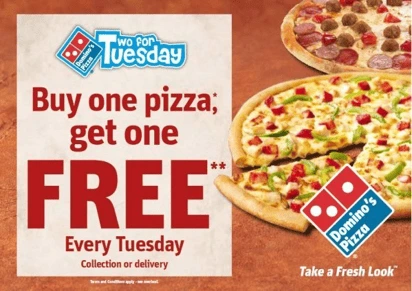
2. Easy
This one is self-explanatory. ‘Easy’ implies convenience, comfort and quickness—although it doesn’t actually guarantee that the service will be any of those things. Most of the time, marketers use this word to describe a simple, uncomplicated process, but the unspoken implications of this word help to sell it even more.

3. Now
The word ‘now’ is often used in a phrase to indicate time, which piques customer interest because people naturally like instant gratification. Think of all the ‘now’ phrases that you’ve seen in calls-to-action and promotions alike: Save Now, 30% off Now, Get Samples Now, etc. Simply indicating that the reward will be immediate makes the offer more enticing.
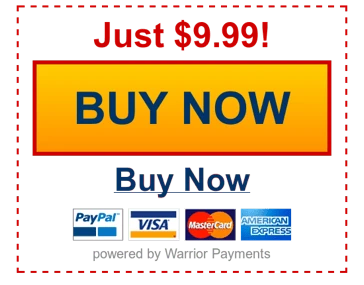
4. Save
Who doesn’t like saving? The word ‘save’ rings a bell and reminds us of our truest desire: to preserve and expand our resources. We’ve become so invested in this principle that promotions actually convince us to spend before we ‘save.’ It seems counterintuitive, but it still works because we believe that we can save money (or time, or hassle) by spending it first.
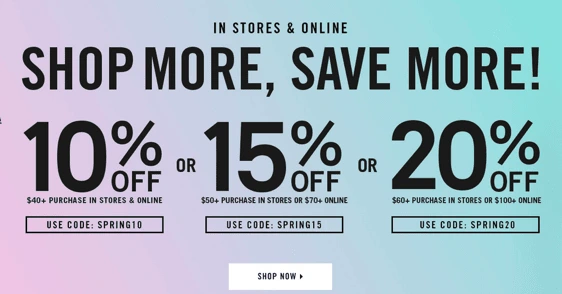
5. Package deal
As we know from the telecom and cable industries, bundling products together is a wise way to drive more sales. Giving your customers the opportunity to purchase package deals speaks to their desire to get more with less money. It’s the ‘bang for your buck’ mentality that drives this marketing phrase forward.
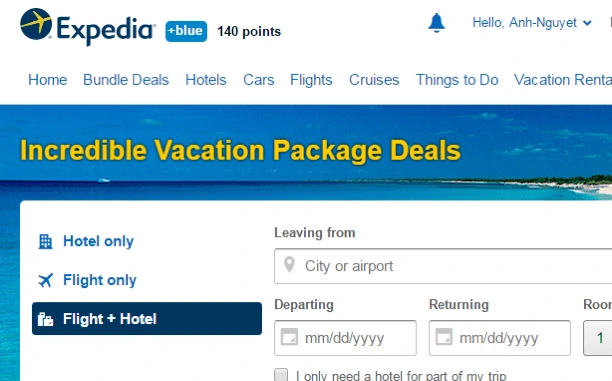
6. Premium
Labeling a product or service as premium might intimidate those who aren’t looking to spend more than they need to, but ‘premium’ works especially well with offers that indicate limited availability and discounted prices, such as Premium Package or Premium Deal. When paired with the right offer, ‘premium’ creates a sense of scarcity that encourages action.
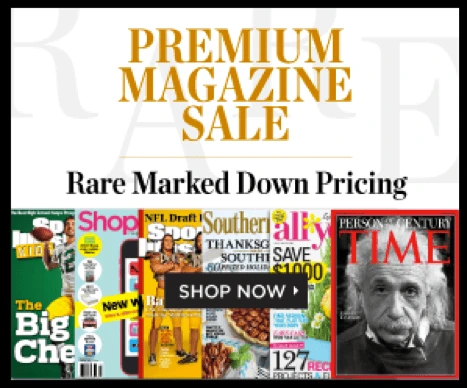
7. You
Addressing a customer directly singles them out from the crowd and creates a sense of conviction. One of the most popular advertisements that exemplifies this word was James Montgomery Flagg’s “I want YOU” poster for WWI recruitment. The Uncle Sam poster is possibly the most famous poster ever due to its iconic illustration and commanding punchline: “I want YOU for U.S. Army.” Using the word ‘you’ is much more persuasive than addressing the general public. Imagine if the poster simply illustrated a cross-armed Uncle Sam with the words, “I want everyone in the U.S. Army.” Since no one is being singled out, there would be much less conviction and the message wouldn’t have the same profound impact.

8. No obligation
Have you ever wondered why service providers always leverage the term “No contracts”? The thought of being forced into a commitment understandably repels customers. No one wants to be trapped by a contract. Therefore, to reduce friction, it’s important to state that a service or product does not come with any strings attached. Give customers the reassurance that they aren’t bound to any hidden obligations, so they can explore your brand without fear.
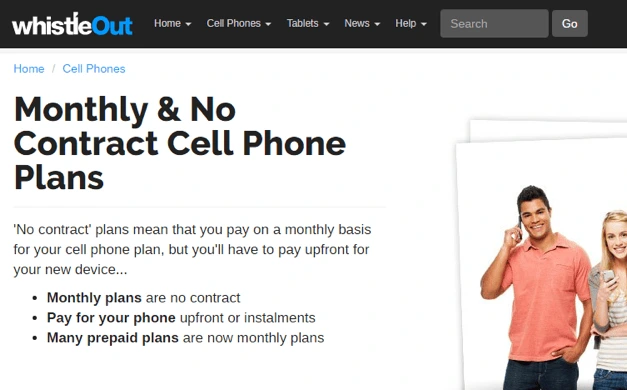
9. New
New Arrivals and New Markdowns sound tempting to the itchy buyer because it taps into the fear of missing out. They want to be the first one in, so they get to see what’s new before anyone else does. They get to be ‘in the know’ and have access to the best items or deals.
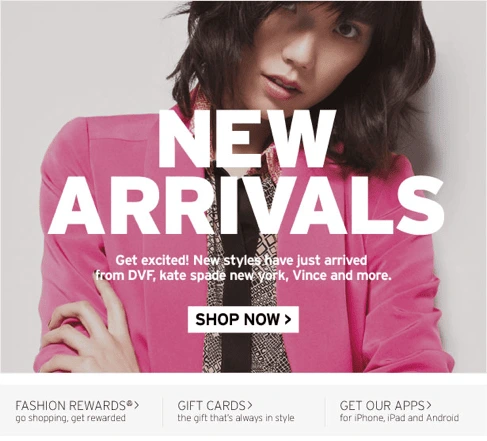
10. Limited
Similar to the word ‘premium,’ the word ‘limited’ creates a sense of scarcity that motivates consumers to make a purchase because the items won’t be there for long. The word ‘limited’ might even be better than ‘premium’ in some instances, because it doesn’t come with the implication that the limited item will be higher in price.
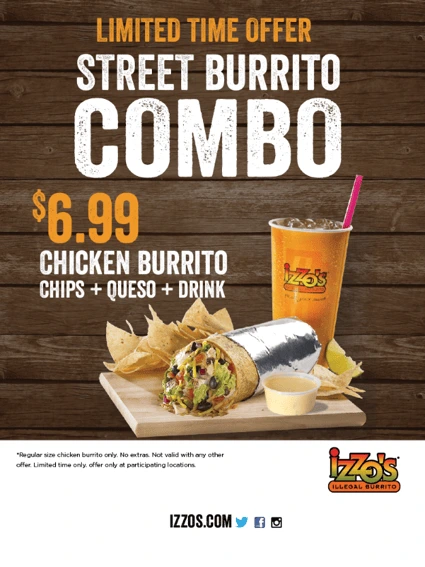
11. Ultimate
‘Ultimate’ often functions as a synonym of ‘best.’ It can also be used to indicate a comprehensive or all-encompassing experience. When a promotion contains the word ‘ultimate,’ there is an unspoken understanding that whatever is on offer must be of great quality. It might not be the first, but it’s the ultimate.
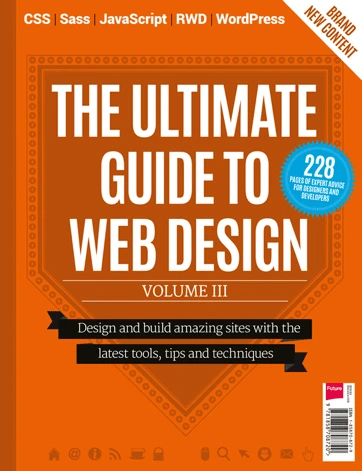
12. Professional
There’s something about the word ‘professional’ that gives an item or service more authority and credibility. It often implies a higher standard. Without being fully aware of it, when we see this word, it brings into our mind what professionalism should look like—and we apply that to the promoted product or service.
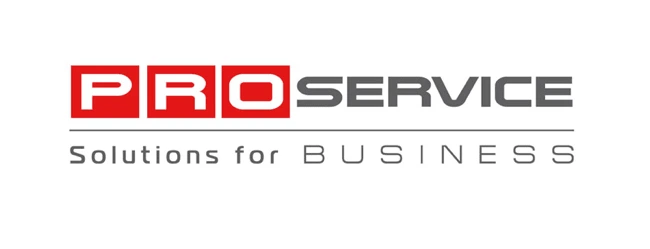
13. Competitive
Labeling a product or service as competitive helps the customer envision how multiple products could be compared to one another—and how the one that’s most ‘competitive’ is the winner. Everyone wants to be on the winning team, and competition drives us to constantly improve. When you say your brand is competitive, you’re making a promise to the customer that you’ll always strive to be the best.

14. Sale
The word ‘sale’ ties back into the idea of saving, because it implies that the consumer can save money by purchasing the sale items now. Sales have worked wonders since they were invented, because they wrap together so many concepts: discounts, limited time, availability. Just be careful not to run ‘sales’ all the time, because customers will get used to it and always expect your prices to be low. Sales should be events that your customers look forward to.
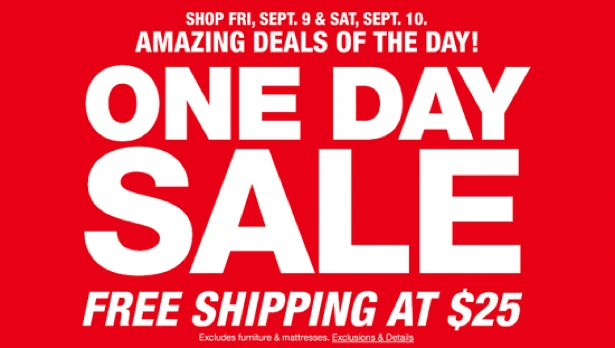
15. Results
‘Results’ plays on our desire for instant gratification. Seeing that the product or service promises fast results or even guaranteed results, we sometimes can’t help but jump at the opportunity. It also helps to have proof of what a product or service can do for us, so we can better envision how it will improve our lives.
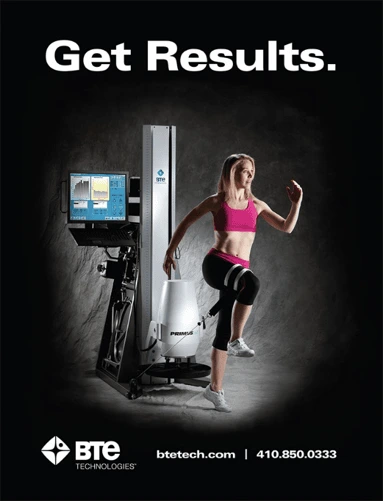
You may have seen all of these words used over and over again, yet they still retain their power. This is because our brains have learned to respond to these trigger words through social conditioning. We’re inclined to want more and higher quality at little to no cost, even if it seems unrealistic.
These trigger words might work in drawing customers in, but they won’t contribute to your brand’s longevity if they are only empty promises. To make the most of these words, use them sparingly and only when you can deliver exactly what you promise. That way, you’ll earn customer loyalty and a better reputation.
According to Email Marketing Industry Census 2018 by Econsultancy and Adestra, 74% of client-side marketers rate email as an effective marketing channel based on ROI. It’s one of the best ways to reach out to your prospects and generate more conversions.
Related: 11 things to consider before your next email campaign
To use email marketing to its full potential, here are 19 effective best practices to get more responses from your target audience and entice them to take action.
1. Reach out with a purpose
When composing an email, think about what you want to achieve—and from there, decide what information you should include in your message. Going in with vague ideas will most likely lead to confusion and miscommunication, so make sure your emails are always driven by purpose rather than the calendar. Or, put another way: it’s okay to send fewer emails if it means the emails you do send are more impactful.
Each email you send should serve a singular, clear purpose. Asking your audience to do too many things at once will result in them doing nothing at all—an unfortunate side effect of the choice paradox. With one strong call-to-action, you have a much higher chance of persuading your audience to take the next step.
2. Put yourself in their shoes
Step back and take a look at the email you’ve composed. Would you appreciate this email if it arrived in your inbox? Does it offer something informative, entertaining or valuable? If not, you still have work to do.
Here’s an idea: present a problem to the reader and solve it in the email. If you’ve done your homework, you should know your target audience’s desires and pain points. Speaking directly to their experience will be far more compelling than simply advertising your latest sale or blog post.
3. Make it easy for subscribers to contact you
Many times, emails are sent from a “no-reply” address that leaves no way for subscribers to respond. This means you’re missing out on valuable feedback from your readers. Instead, send your emails from an address that accepts replies. It doesn’t have to be yours—consider setting up a shared inbox for an address like marketing@domain.com or blog@domain.com.
Encourage subscribers to get in touch with you, or request a reply through email. However, make sure someone is available to promptly answer them before you implement this.
In all of your emails, include the name of your company along with the physical address, phone number, company website, and links to social media profiles in the footer.
4. Work on your subject lines
Your subject line is like the trailer of a movie. It strongly influences the first impression your subscriber will have of your email. Obviously, you do not get another chance at this. The more interesting the subject line is, the more likely a recipient will open the email. According to research, 33% of people open an email based on the subject line. Use a personalized and compelling subject line that would tempt your readers to find out more.
Short subject lines work best for achieving better open rates. You could even try using emojis to grab your subscribers’ attention. Test your subject lines to see which pulls a better conversion rate and sells more.
Refrain from using buzz words like “You earned” or “Congratulations,” because their overuse leads users to think it might be spam. Be truthful about what you are offering, and let the subject line shine to reveal the real value behind your message
5. Have crisp & engaging email copy
Personalization is an integral part of effective email marketing. Incorporate the principles of personalization to draft relevant, tailor-made emails that match the buyer’s persona and each stage of the buyer’s journey.
For example, if a subscriber has just signed up, it wouldn’t make sense to send them your pricing structure right away. Instead, you can send a welcome email accompanied with a content resource that addresses their probable challenges & pain points—and how you can help resolve them with your product or service.
Avoid technical jargon as much as possible. Rather than describing the features of your product, talk about its benefits. Try to build personal rapport by appealing to the reader’s emotions.
6. Don’t use too much special formatting
Formatting has a remarkable psychological effect on a reader. Use bullet points or numbered lists to organize your content and make it more readable. Refrain from using various fonts and colors—instead, stick to one or two of each. Only use bold, italic or underline to emphasize important words in the copy. The simplicity makes your brand look more professional, and it’s easier to read.
7. Adhere to the brand guidelines
If you want to build a credible brand personality through emails, follow the brand guidelines. In particular, pay attention to the sections on voice & tone. Send frequent emails that are in sync with your personas, business type and industry. Regular email communication will ensure that your brand remains at the top of your subscribers’ minds—but consistency will keep your brand message strong.
8. Create mobile-responsive emails
Responsive emails that function and look great on mobile devices have become almost mandatory. According to a study, 63% of US consumers will delete emails from their inboxes if they don’t open on mobile. Even worse, what if they read your email and want to act on it, but the design prevents them from doing so? Either way, you lose your mobile audience and end up hampering your email response rate. Make sure any outbound links or downloads are accessible via mobile, too. Responsive design will help you reach readers on any browser or device, so your marketing doesn’t go to waste.
9. Use a persuasive CTA
The ultimate goal of a marketing email is to convince subscribers to click on your CTA and take the next action. A strategically placed CTA button with clever copy can make all the difference in your campaign. Experiment with different colors and phrasing. Try action words instead of the standard “Click here.” It’s far more compelling to click a button that says “Download now” or “Get my free sample!”
(And remember: your CTA should be easily tappable on mobile devices, too.)
10. Automate your email marketing
Starting from the time a prospect signs up on your website, and continuing past the time they become a customer, you should trigger-send emails to them according to their interaction with your brand.
When a prospect downloads any resource from your website, you can send them relevant emails to follow up on the content and entice them to respond. Because they’re directly connected to actions a subscriber has taken, these automated emails often have higher open and click-through rates. These emails even give you an opportunity to upsell, cross-sell, re-engage inactive customers, and create a customer loyalty program.
11. Keep it simple
Simplicity and straightforwardness are two key elements of an effective email marketing campaign. Emails shouldn’t be overly cluttered with design elements, but they also shouldn’t be so sparse that they fail to grab attention. Go for a healthy balance between the two and create a comfortable design that pleases the eye. As for the copy, remember that you are talking directly to the reader through this email, so make it conversational but stay professional.
12. Measure performance
We’re in the era of data-driven marketing. You must measure and record the data generated by your email campaigns—not just to see how well you did, but to uncover insights on how to do better. Overall, there are four major elements you should be tracking in an email campaign: opening rate, click-through rate (CTR), bounce rate and response rate. With this data in hand, you can start to measure trends, tweak your strategy, and gain key insights about the reach of your newsletter and how it’s perceived by your audience.
13. Use gorgeous images
Images are a surefire way to make your newsletter more appealing to an audience. The human brain processes visual info much faster than text, and those few extra seconds can make or break the difference between an email that gets read and one that gets deleted. So, choose your images wisely.
Custom graphics in particular offer an opportunity for memorable branding. Follow your style guide to match colors, icons and photography styles. Pay attention to the tone and voice your images convey as well. Stock photos are a fine shortcut, but only if they reinforce the look and feel of your brand. If you’re worried about spending too much time on your images, use a tool like Lucidpress to set up editable templates, then switch out the text and graphics as needed.
14. Try animated content
Animated content is popular with readers, but many brands still haven’t mastered how to use it. If photos are more expressive than text, then videos and GIFs are even more swift at relaying the message. GIFs are also a great way to provide a snippet of a larger video.
You can make the tone of your newsletter lighter by adding GIFs in the body section. Initially, GIFs were almost always used to add humor to content. Nowadays, you can use them in many ways, such as showing how your product or service works. However, there are some drawbacks for animation enthusiasts who are planning to use GIFs in their next email:
- Several versions of Outlook do not support animated content. (Oh, Microsoft.)
- GIFs have larger file sizes, which might slow down the loading speed of your newsletter on older devices.
- If used incorrectly, your brand can come across as insensitive or insincere. Consider asking a few people to read your email before you send it, to make sure your tone comes across as intended.
15. Consider timing
It’s been estimated that most emails are read by people in the evening, the time when they are most free. It may seem counter-intuitive, but sending an email later in the day could result in a higher conversion rate because readers have more time to follow your message.
Since most marketers work during the day, you can use a scheduling tool to do it for you. According to Accelq: “Automation should be integrated into the overall lifecycle, and not a ‘test automation’ silo.” The more you can automate, the less you have to babysit.
16. A/B Test
Any kind of marketing strategy that aims to increase conversion rate should be tested. A/B testing is the easiest (and cheapest) way to check the effectiveness of your strategies.
Testing will help you develop a clear idea of how a campaign is going and how you can improve it in the future. Email marketing campaigns can be hugely successful when you start testing and tweaking any flaws in the interface. You can also validate your hypotheses for things like CTA buttons, images, time of delivery, and landing pages. Here is a comprehensive starters’ guide for A/B testing your emails.
17. Segment your audience
It’s an unfortunate reality: most people who sign up for your newsletter are not going to open it. How do you encourage them to open the email and convince them to convert? Sometimes, you need qualitative data to find out. That’s right: send them an email to find out why they are not opening your emails.
Sound futile? It doesn’t have to be. You can offer incentives and promo codes to lure them in. With the results, you can set up audience segmentation to ensure that various user personas are targeted differently through your email marketing campaign.
If an email survey doesn’t sound like your bag, you can also collect this data via phone calls or personal interactions with your customers. Regardless of how you do it, you need to create targeted, personalized emails for your readers. “One size fits all” doesn’t work anymore. [ ]
18. Build relationships
When someone subscribes to your newsletter, they’re agreeing to an ongoing relationship with you. You need to show that you value them, that you care about their problems and choices. This applies to every part of your email: the graphics, the copy, the offer, the tone. Use your findings to consistently improve your email campaigns and serve your customers better than before. Build a relationship that makes them proud to be your brand’s loyal customer.
19. Proofread and test your emails!
So many people forget (or choose not) to do this, leaving mistakes in their content which make them seem unprofessional. Definitely not a good look for anyone, this can be prevented with a simple process called… proofreading. Simply reading your work goes a long way toward catching any grammar mistakes you have made, which will save you a load of embarrassment. No one wants to discover that they misspelled a word in an email to their entire customer base.
How about another pair of eyes? If you want someone to see it fresh, you can ask someone else to do it. You could even hire an online freelancer to get help from a highly qualified person. Sure, it costs money, but it might be worth the peace of mind to know your emails are top-notch.
Finally, send yourself a test version of your email. See how it looks in different browsers and on different devices, including desktop and mobile. A formatting error which is unnoticeable in Chrome might be egregious on iOS, so it’s better to cover your bases before you hit send.
Key takeaway
Getting more responses to your marketing emails is not an impossible goal. With the right techniques, you can stand out from the competition, create lasting impressions of your brand, and build relationships with your readers through their responses.
Kickstart your next email marketing campaign with our free newsletter templates.
You’ve built a great website and have an impressive email database, and you’ve even built a decent following for your brand by following tips you’ve read in real estate marketing guides.
Now you want to know what content you need to keep you at the front of the pack.
Related: Real estate branding—a comprehensive guide
First, while it’s true Google likes fresh content, mediocre fresh content will not help you. Prospective clients look for informative, valuable or entertaining content that prioritizes high-quality visual design.
If you’re searching for ways to do that, here are our tips on how to post great real estate content for your audience.
Why content marketing in real estate?
Content marketing is a valuable tool for building up brand awareness and driving leads. Blog posts optimized to show up in search engines can drive organic traffic to your website saving you from paying for ads and media buys month after month. Building up a presence on social media as a skilled real estate agent can help drive referrals and help potential clients to think of you the next time they are considering buying or selling a home.
Generating real estate content marketing ideas
In content marketing quality is better than quantity. Agents will see a much higher return on investment by focusing on generating content that potential business leads will be interested in. Before sitting down and coming up with a list of ideas, think about what your overall content strategy will be. How will potential business leads find your content? Is there a particular content marketing platform you will use?
Some common channels include:
- Search engine optimization (SEO)
- Social media
- Communities such as Facebook groups
- Content co-creation
By selecting one or two channels to focus on you will be better able to come up with content ideas that will perform well. If you are focusing on SEO, use keyword research tools such as SpyFu, Ahrefs or the Google Ads planner to identify topics people search for that are relevant to your industry. If you’re focusing on social media, communities or co-creation, get to know what members frequently discuss and brainstorm content you can create that will be relevant and useful to that audience.
Hire a good writer
We’ve all been drawn to some click-baity content at some point, often because we’re drawn in by an enticing headline.
By now, however, most of us realize that anything that claims to be jaw-dropping (like “You won’t believe what happened to this third grader when he opened his lunch”) isn’t actually worth clicking. Your real estate clients want content with more substance—information that relates directly to the industry—and to get that, you need to find a good copywriter.
You might already have a talented writer on staff who knows how to write good articles about rent rates, homeownership and mortgage financing. Otherwise, you can reach out to a PR firm or real estate marketing agency that specializes in content.
What should you publish?
Whether you’re marketing an apartment unit in Chicago, Illinois, or a New York City micro-apartment, the place to start is with website copy, blogs and newsletters.
If your website has been around for a few years, make sure it’s up-to-date and that the copy is fresh.
Publish a blog post at least once a week, and make it better than all the regurgitated content out there. Newsletters can help you spread the word, and there are still many real estate pros who send newsletters by snail mail.
For a look at a few shining examples in the real estate industry, check out this list of the top real estate blogs.
Once you’ve mastered the basics, remember content marketing is more than just blogging. Visual content such as infographics, photos and videos perform well on social media and can better communicate ideas that are difficult to describe.
Repurposing a blog post into an infographic or video is also a great way to spruce up your email marketing and send engaging content to readers who don’t have time to read an entire blog post.
Long-form content such as ebooks or webinars are also effective lead generation tools. Provide a guide to buying your first home or investing in a rental property and ask for a name and email to access it. Then place your new contacts in an email campaign and nurture those leads into your next client.
What should you say?
Your website should clearly and cleverly explain who you are and what you do. Blogs can cover a variety of subjects that your clients are interested in, like:
- Saving energy
- Lawn care tips
- Home winterization
- Interest rate trends
- Financing pitfalls
Your newsletters should be more specific, covering:
- New listings
- Market trends
- Financing trends
- Economic projections
- Recent sales
Each month, you can highlight a relevant, timely subject like:
- Summer pest control
- Preventative HVAC maintenance
- Cleaning out the gutters
- Lawnmower winterization
Remember: You’re the expert
A client who’s trusting a real estate agent to sell their home or purchase a new one will feel far more comfortable if you can show you know the neighborhood inside and out.
That’s why your content should cover local interests like reviews of new restaurants, lists of local daycare centers, and articles about any subject that make it clear you thoroughly understand the community.
Expert guides are a great way to establish credibility. Try researching and writing about things like:
- How to finance your first home
- Cleaning up your credit score
- What to do after your offer has been accepted
- Avoiding the bad-faith offer
- How to market your first property
- Marketing tools you must use as a real estate agent
Key takeaway: Content rules
It’s a digital world, and content is king.
While there’s still plenty of room for traditional marketing, most of your content will be published online. Make sure it’s timely, well-written, and of course, original.
Most of all, your content should be engaging and informative. If you can provide value to your readers, they’ll remember you any time they need your services, because you’ve already established yourself as a professional who they can trust.
Learn more about building a strong brand with this free guide to real estate branding.
When you’re selling properties with a hefty price tag, attracting new customers isn’t the easiest thing in the world—especially since they’re only likely to buy if they’re actively looking for a new home.
Despite the fact that the number of leads generated for real estate companies has increased by 65% since 2016, the conversion rates of those leads are tanking. It’s not as easy to take a prospect from initial meeting to sale completion as it once was.
Related: 8 tips to get more responses to your email marketing
However, there’s one thing you can focus on to change the story: Email marketing. In an industry where high-ticket items are a huge investment, email marketing could be the perfect channel for you. That’s because consumers who purchase through email spend 138% more than those who don’t receive email offers, on average.
That’s right: By diving into the inbox of your potential clients, you’re etching your real estate brand in their mind. Then, when they’re ready to take the next step and purchase a new home, they’ll come to you—rather than the other way around.
If you fancy making that dream a reality, follow this guide to real estate email marketing.
How real estate companies can use email marketing
Are you ready to hit “send” on your emails and fire off a message to everyone who’s contacted your real estate company?
…That might not be the wisest idea.
There’s a whole list of things you need to do before sending an email marketing campaign, and here, we’ll cover a few of the major ones.
1. Collect information on potential customers
You can’t email people who might be interested in your properties if you don’t have their contact details. Sounds obvious, right? However, you don’t want to contribute to the 79% of marketing leads that never convert to sales.
So, start your real estate email marketing campaign by making sure you’re emailing the right people. You could attract potential clients (and convince them to handover their email address) by:
- Creating a free ebook on a relevant topic but asking for their email address in return.
- Asking people who’ve inquired about a property whether they’d be interested in receiving your newsletter.
- Running Facebook ads which ask target customers to fill in a form and receive a brochure via email.
Just take a look at this ebook, created by The Kingdom Real Estate, which helps to collect leads from their website:

Because the free ebook is gated and requires an email address to access, it’s a fantastic way to add warm leads to your email marketing funnel.
But, this step comes with a warning: Always make sure you’ve got permission to contact the person you’re emailing—especially if they’re located in the EU. You don’t want to land yourself a hefty fine for going against GDPR regulations.
2. Create a perfect subject line
When you’re sending an email, the subject line is almost—if not more—important than the email itself. Why? Because 47% of email recipients decide whether to open an email based on the subject line alone.
If you’re not crafting an interesting subject line that piques your audience’s attention, there’s a high chance your email will head straight to their virtual trashcan. Research has found that the best subject line:
- Contains 6 to 8 words (source)
- Includes the recipient’s first name (source)
- Has a sense of urgency (source)
Use these best practices when piecing together the tagline of your real estate email marketing campaigns before hitting send.
3. Write (or share) something valuable often
Think about the last time you opened an email in your inbox. (It doesn’t have to come from a real estate company.)
What made you open it?
Chances are, the message didn’t land in your trashcan because it contained something of value to you. Whether it contained a discount code for your favorite store or a free guide to something you’re struggling with, your customers are the same.
They’ll only open and respond to emails they get value from.
Your real estate business can use this concept by asking yourself, “What value am I providing in this message?” before hitting send on your latest campaign. That could be:
- A message to let them know about a discount on a property they’ve inquired about.
- A discount on realtor fees if they’re looking to sell their current home.
- A solution to one of their pain points.
In short: If you’re not giving value to your subscribers, think twice about sending it. You don’t want to be seen as the annoying company who constantly sends self-promotional messages. That’s only going to lead to an unsubscribe.
4. Analyze what’s working
You’ve built up the courage to hit “send” on your email after working hard to perfect the subject line and email copy. What happens next?
Well, like any new real estate marketing campaign, you’ll need to analyze whether your new strategy is working. It’s the only way to know whether it should play a key role in your marketing plan, going forward.
To do this, head to your email software and analyze key metrics like:
- Open rate. What percentage of people received your message and opened it?
- Click-through rate (CTR). Did many people click the link in your email?
- Response rate. How many people hit the “reply” button and started a conversation off the back of your newsletter?
- Conversion rate. How many people made a purchase as a result of your email?
Your goal here is to find a common denominator across high-performing emails and replicate that moving forward. For example, if the emails with the highest click-through rates contained emojis, build this into your set of email marketing best practices in the future.
Tools for real estate email marketing
Using the right tools will help you be more efficient and effective at your email marketing. To start, you will want to select an email marketing tool that can collect contact information, segment lists and schedule emails. For agents starting out with smaller lists, a service like MailChimp or Constant Contact will provide the basic functionality you need.
In addition to managing your email list, you will need a tool to help you design your emails and generate content for your email campaign. Lucidpress offers an easy-to-use design tool with social media templates, infographic templates and flyer templates to get you started. You can also design the entire email in Lucidpress with one of our email newsletter templates and use our ConstantContact integration to send your emails straight from Lucidpress. Or generate HTML code and paste it into any email provider of your choice.
Bonus: Free real estate email marketing template
Are you ready to put these tips into practice?
If you’re still hesitant, don’t worry. Writing email messages to your potential customers can feel daunting—which is why we’ve created a free email marketing template you can use to push subscribers back to your website.
Simply edit the capitalized text, add your own personal touches, and you’re good to go.
Subject line: ? NAME, here’s a free guide to BLOG POST TOPIC
Message:
Hey NAME,How’s it going?
Here at COMPANY, we’ve been working hard on RECENT ACTIVITY. In fact, we’ve listed X new properties this week! (That’s no easy feat.)
To top it off, we’ve just published a guide to BLOG POST TOPIC.
Including DETAIL #1, DETAIL #2 and DETAIL #3, it covers some of the most common issues we see with home-buyers-to-be.
Click here to give it a read: LINK
If you’ve got any questions, ideas or suggestions for this guide (or anything we talked about in it), drop me a line. I watch my emails like a hawk, and I’ve always got time to chat with you, NAME.
Best,YOUR NAME
Key takeaway
As you can see, email marketing is a fantastic way for real estate companies to generate more leads—and turn those people into paying customers through your email workflows.
By committing to a weekly newsletter or regularly sharing free value with your subscribers, there’s no reason why a few tweaks to your email marketing strategy couldn’t be the best thing you’ve done for your business lately.
(At least not when you’re using our templates.)
Your brand matters. Learn how to protect and elevate your real estate brand in this branding essentials guidebook.
If you’re among those who think email marketing is too old-school to be effective these days, you’ve got the wrong idea. Email marketing is still a powerful tool that can help your brand shine.
Related: 8 tips to get more responses to your email marketing
What makes email so effective is the fact that it’s a permission-based marketing channel, one that gives you a chance to reach customers in a personal place—their inbox.
When a prospect signs up for your emails, they’re expecting a welcome email that introduces them to the brand. As this is the first email your subscriber will receive after being added to your email marketing list, it’s crucial to do it right.
9 best practices for your welcome email
1. A timely introduction
Your new subscriber wants to know more about your products & services at the time they sign up for your emails. Take advantage of their interest by sending out a welcome email as soon as they sign up. If you miss out on this opportunity, there’s a real possibility that the subscriber will forget about you and lose interest in your brand.
2. Crisp subject lines
All the work you put into crafting an engaging email will be for naught if your email doesn’t get noticed in a crowded inbox. Add an extra zing while crafting the subject line for your welcome email.
To make your email feel more personal, try using personalized subject lines. People are attracted to their own names, so this will lead to higher open rates. Here’s an example from Google:
Subject line: Smiles Davis, Welcome to your Google Home Mini

3. A pleasant greeting
Greet your new subscribers with a warm welcome email that’s personalized to their interests and preferences. Even when you’re sending automated emails, you can write them in a way that feels personable and real—like they’re coming from a human being and not a robot. Consider using an employee’s name and picture, so subscribers can visualize who’s behind the emails they get from you.
4. Guiding them through the next step
Making your customers wait too long isn’t good practice. You’ll have far better results if you intentionally build brand loyalty and guide customers through the purchase process.
For example, if you’re an online cosmetics brand, tell them why they should choose your brand over the many other brands in the market. Give them an overview of your products and how they can browse your app or website to find the cosmetics they want. If there are other actions you want them to take, spell those out as well—like in this example from nDash.
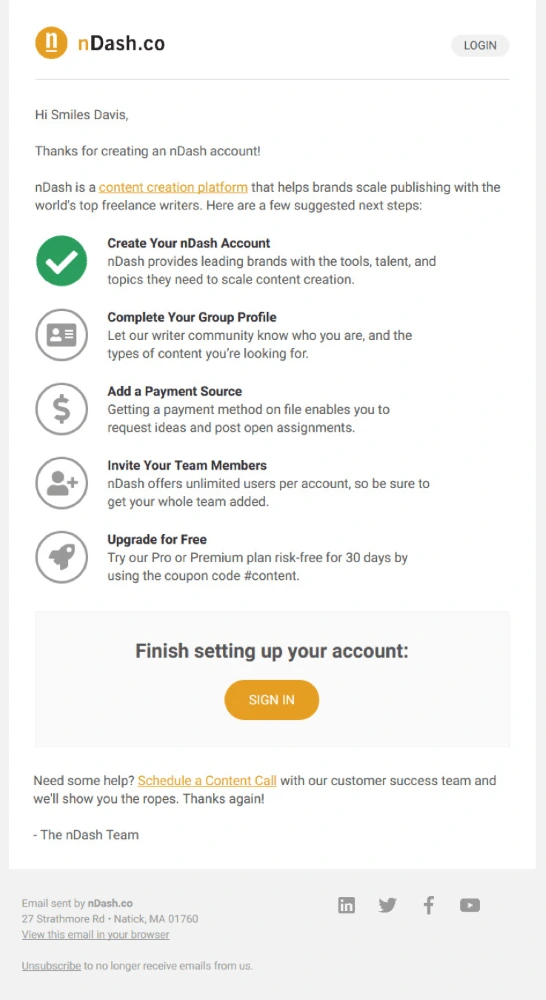
5. Include freebies in your welcome email
This is your chance to win over new subscribers with low-cost goodies. People love free stuff, so this will endear your brand to them right out of the gate. If you can’t afford to give away items for free without a minimum purchase, consider including a discount or promotion instead—such as a percent-off coupon or a buy-one-get-one promo code.
6. Hit two goals with one email
According to email marketing best practices, it’s recommended to include links to your social media profiles in your email. Ask them to like or follow you on the platforms you use most.
This is an especially clever move for e-commerce brands, since they need a strong audience to build their reputation and provide social proof. Even if you’re not an e-commerce brand, you can build buzz and loyalty by directing subscribers to your social channels.
7. Ask to be whitelisted
Being whitelisted can enhance your deliverability rates and make it easier for subscribers to find your emails in the future. It also helps to keep your emails out of the Spam folder. See how Travelocity asks people to whitelist them in the section titled Subscription Information:
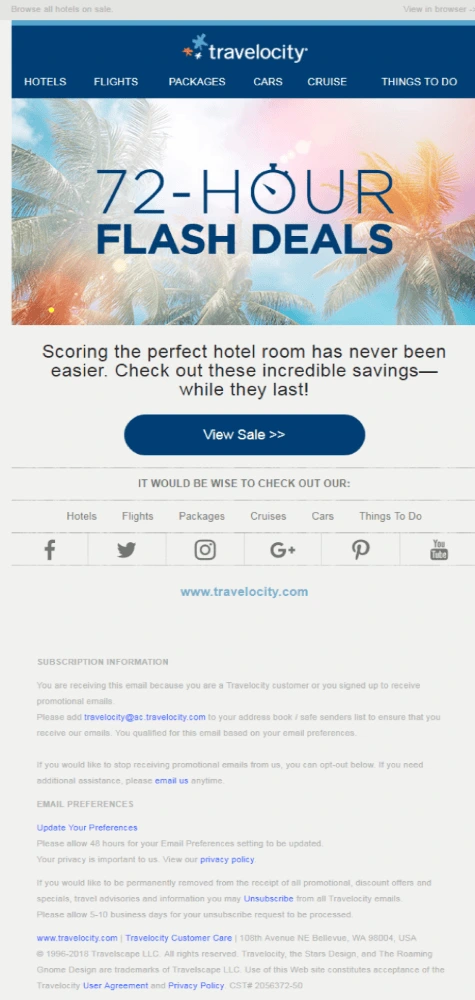
8. Give them a way out
You should always give your customers the option to unsubscribe from your emails at any point. By doing so, you’ll retain genuine subscribers in your list—people who are actually interested in reading your emails. In turn, your engagement metrics will rise, because you’ve eliminated those who aren’t interested in purchasing from you. (Also, unsubscribes are always better than spam complaints.)
9. Include free shipping
For e-commerce brands, one major obstacle your subscribers face while shopping online is high shipping charges.
Ease that friction and encourage first-time buyers by offering free shipping on their first order. Try mentioning it in your welcome email to delight your new subscribers. Creating a happy customer at the onset goes a long way toward building loyalty for your brand.
Mantras to keep your welcome emails engaging
- Pin your top content
Play your cards right with a welcome email that features your best content and gets them excited about your brand for the long haul.
- Avoid no-reply
Do not send your emails with a no-reply email address. It feels impersonal, and it’s important to assure your subscribers that you’re listening to them. They should know there’s a person behind the email ready to hear their problems and feedback.
- Make it compelling
Make your email compelling with content. Welcome emails should catch the subscriber’s attention from the moment they open it. If you’re struggling, try adding a dash of fun or humor to your email. Include interactive elements like GIFs, accordions, cinemagraphs or videos to make it more visually appealing.
- Build anticipation
Create a sense of anticipation with your welcome email. Don’t spill all the beans right at the beginning. Each email should leave the subscriber waiting for the next one. Find a way to highlight your best content and maintain curiosity in your subscriber’s mind so they look forward to hearing from you.
- Try a welcome email series
Instead of just sending one email for the sake of formality, consider sending 2-3 welcome emails as a series to initiate your subscribers. In a welcome series, you can introduce and explain different pieces of your business and entice subscribers to purchase from you.
- Write accessible emails
With one billion people in the world living with some form of disability, it’s incredibly valuable to write accessible emails that can be understood by everyone who receives them. Think about all the ways people might interact with your content—for example, different devices and browsers. How does your email sound when it’s read out loud to a blind audience? What does your plain text email look like? When your message is more inclusive, you have a wider audience to nurture.
Key takeaway
Welcome emails are an excellent opportunity to introduce subscribers to your brand, encourage purchases, and lay the foundation for loyalty down the road. Make sure you include all these essential elements in your welcome emails to set your brand up for success.
Kickstart your next email marketing campaign with our free newsletter templates.
Despite the prominence of digital marketing, print collateral still has an important role to play in a balanced marketing strategy. A professionally produced brochure suggests a high budget and an established reputation.
Related: How to make a stunning travel brochure
Not only that, but brochures are versatile marketing tools. You can distribute them at trade shows, put them in brochure racks, send them via direct mail, and even publish them on your company website.
(They’re also very portable. Many people would prefer to grab a brochure and read it at their convenience rather than engage with a salesperson.)
Most brochures are just a few hundred words in length, so you don’t have a lot of space to get your message across. It’s important to make every word count. Here are eight tips for writing a brochure that signals professionalism and competence — and spurs your readers to action.
1. ) Create an outline or plan of attack
Brochures vary in content and length, but most follow a standard format.
- The front panel displays the company logo and headline.
- The inner panels make a case for the product/service using supporting facts and details.
- The final panel contains contact info and a call-to-action.
Please note: At the end of this post, we’ve included a cheat sheet of content types you can put in your inner panels.
Before you start writing, identify your target persona for the brochure including age, gender, location, role, income, interests and challenges.
This information will guide the tone, language and content of your brochure. It’ll also help you choose a call-to-action that appeals to your readers. For instance, an offer for a free white paper would likely be of interest to an executive, whereas a mobile app download would be more fitting for a college student.
Make note of where your target audience is in the buying cycle. Don’t waste space going on about the history of your organization if your readers have done business with you before.
Also consider the level of understanding your prospects already have about the topic. Are they experts, novices or somewhere in between? Keeping this in mind will help you avoid alienating readers by talking down to them or confusing them.
2.) Write a compelling headline
Your headline will determine whether a prospect picks up and reads your brochure or tosses it aside.
Avoid using headlines that don’t tell the reader anything about the contents of the brochure — for example, “Make a Good Impression.” What does this mean, who are you making a good impression on? And for what purpose?
You can provoke a reader’s curiosity without being vague. These example headlines spark interest while also telling readers exactly what they’ll get from reading the brochure:
- Scared of the Dentist? Learn How Sedation Dentistry Can Help
- The Ultimate College Prep Checklist: A Four-Year Plan for High School Freshmen
- 4 Reasons to Think Again Before Buying a Foreclosed Home
Don’t be afraid to use “power” words like free, quick, easy, results, exclusive, proven, etc. What they lack in originality, they make up for ineffectiveness.
3.) Be concise and use plain language
Your brochure should focus on one product or service. A trifold brochure only has space for about 350-450 words, so keep words, sentences and paragraphs short. Edit ruthlessly and include only the most relevant information, leaving room for white space and images.
Big walls of unbroken text look intimidating to readers, so use subheads liberally. Try not to put more than a couple of paragraphs in a row without introducing something else to break up the monotony, such as a subhead, bullet-point list or image.
With the help of Lucidpress’s online drag-and-drop editor, you can quickly design a professional-looking brochure with elements like callouts, pull quotes and tables.
4.) Limit the copy to 1-2 typefaces
The typefaces you choose should be easy to read and consistent with your branding. Often, if the subhead copy is in a serif face, the body copy will use a sans-serif face, and vice versa. There are some great free tools available to help you select a complementary font pairing.
Select font size, spacing and color with readability in mind so your prospects don’t have to work to read the brochure.
5.) Give readers a reason to keep your brochure
If you can, include a handy reference of some kind in your brochure to dissuade readers from throwing it away—for example:
- a map of a town marked with top attractions
- a “normal body weight” chart based on the reader’s height
- a list of program-specific student scholarships
- a cheat sheet for first-time homebuyers in a specific city
Also, consider printing the brochure on a high-quality glossy paper to boost its perceived value.
6. Include next steps or a call-to-action
The goal of your sales brochure should be to persuade your readers to take a specific action.
This call-to-action is usually placed on the last panel of the brochure, along with the contact info. To boost response rates, offer an incentive, such as a promo code or free product.
The following are some example actions you might want your readers to take:
- Sign up to your email list for a free white paper
- Visit your website to make a purchase or sign up for a program
- Call to book a free consultation
- Scan a QR code to download an app
- Enter for a chance to win
- Visit your store for an upcoming sale
7.) Proofread your brochure
No matter how much effort you put into your messaging and design, errors and inconsistencies in your printed literature can kill your credibility.
Verify that the tone of your brochure matches the rest of your brand messaging. Unlike informational brochures (which may take the third-person point-of-view), sales brochures usually use the second-person to build rapport with the reader.
Refer to your brand style guide for how to handle things like numerals, dates and titles in the text. If you don’t have a brand style guide, use an established style reference like AP Stylebook. And of course, look everything over for correct spelling, punctuation and grammar.
8.) Double-check for important details
Before the brochure goes to print, check that your logo and contact information are present and error-free. Also look for details you may have forgotten to include, such as:
- Purchasing info—how to place an order, accepted payment types, guarantees, warranties, refunds, shipping, etc.
- Visitor info—accessibility for people with disabilities, hours of operation, seasonal times, admission rates, group sizes, pets, directions, etc.
- Legal info—copyrights, trademarks, registration marks, disclaimers, etc.
You can also create branded templates for your brochures so you don’t miss anything important when you start a new project — Lucidpress handles printing as well.
Bonus: What should I put in my brochure?
For inspiration, here’s a cheat sheet of content types often found in sales brochures:
- Descriptions of products, services, exhibits or attractions
- Features and benefits
- Product specs
- Pricing charts
- Pros and cons
- Itinerary (e.g. winery tours)
- Narrative (e.g. history of a winery)
- How a product works
- How a service is delivered
- How to do something
- Checklists and questionnaires
- Images, illustrations, charts, graphs and maps
- Frequently asked questions
- Company blurb
- Social proof: case studies, testimonials or media quotes, client list, executive bios, etc.
Experiment with a few of these items and see where it takes you. You might be surprised at how quickly you run out of space!
What are you waiting for? Try your hand at design with any of our design templates.
Have you ever worried that your brand messaging is a bit… generic? Does your copy sound flat and uninteresting? Do customers feel like your brand is speaking at them, not to them?
These are questions many brands grapple with on a daily basis. Some focus so much on pleasing everyone that they end up pleasing no one. Either way, the results are a tired brand and conversion rates that hit new troughs every week.
Related: How to create a voice for your brand
As any seasoned copywriter will tell you, it’s much easier to convince a single person to choose your brand than to convince a large group. By personalizing your campaigns, you add intimacy, authenticity and trust—vital ingredients for improving conversion rates.
To personalize effectively, however, you first need to understand who your buyers are. The best way to do that is to create buyer personas.
In this guide, I’ll show you why buyer personas matter for B2C brands and how to make them.
Buyer personas: Not just for B2B marketing
What does your ideal customer look like? What websites do they frequent the most? What are their likes and dislikes?
A buyer persona helps you answer these questions and more. Think of it as a fictional portrait of a specific customer that helps you understand their mindset and create better targeted campaigns.
What is a buyer persona?A buyer persona is a fictional portrait of a specific customer that helps you understand their mindset and create better targeted campaigns.[]
This specific customer doesn’t actually exist. Rather, they represent an entire consumer group. If your brand targets men aged 25-35, for instance, your buyer persona might focus on a 28-year-old single male who works in finance and enjoys playing video games.
Essentially, you create buyer personas so you can create campaigns that are more relevant and personalized. Instead of speaking to everyone’s concerns, you can tailor your messaging to address the concerns of a specific group.
This sample persona from the Buyer Persona Institute should give you a good idea of what we mean:
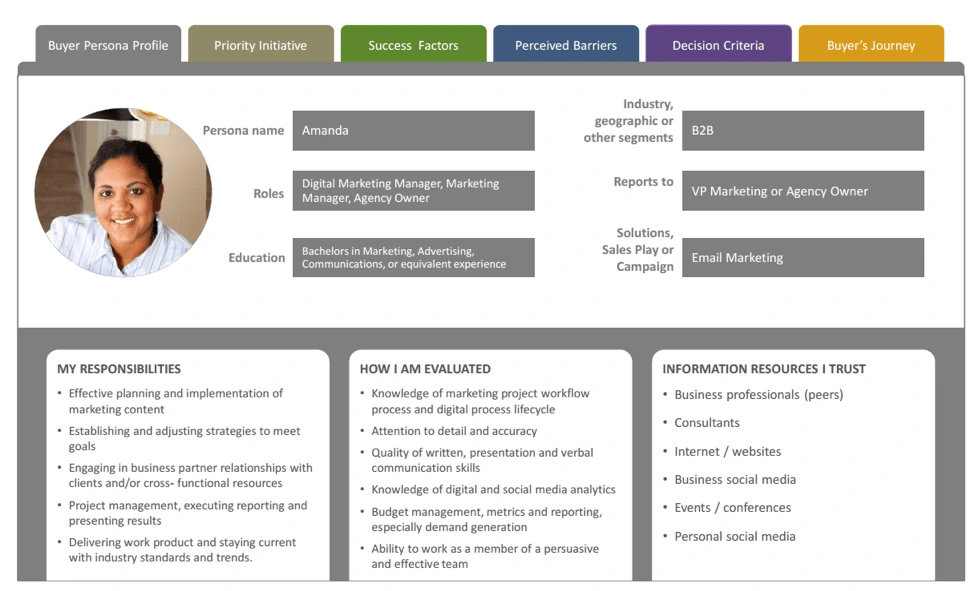
Your buyer personas should target customers who:
- want to buy your products, i.e. have clearly expressed a need and desire to buy from you.
- would buy your products, i.e. are a good fit based on their demographics & psychographics but need to be educated about the product first.
How many buyer personas you’ll have is up to you. A new startup with a single product might have just one buyer persona. A huge corporation like Microsoft might have dozens—even hundreds!—of personas.
How better buyer personas impact conversion rates
Have you ever landed on a website and felt that it spoke just to you? That it mirrored the values you believe in and addressed the exact problem you hoped to solve?
This likely wasn’t an accident; it was probably the result of meticulous buyer persona research.
While there are many ways to improve conversion rates—storytelling, design choices and website speed, to name a few—much of it eventually boils down to the same thing: the clarity of your messaging. When you can identify your customers’ deepest desires and address them directly, you won’t suffer from low conversion rates (and you won’t have to depend on design hacks to save you).
Take Apple’s MacBook Air landing page as an example.
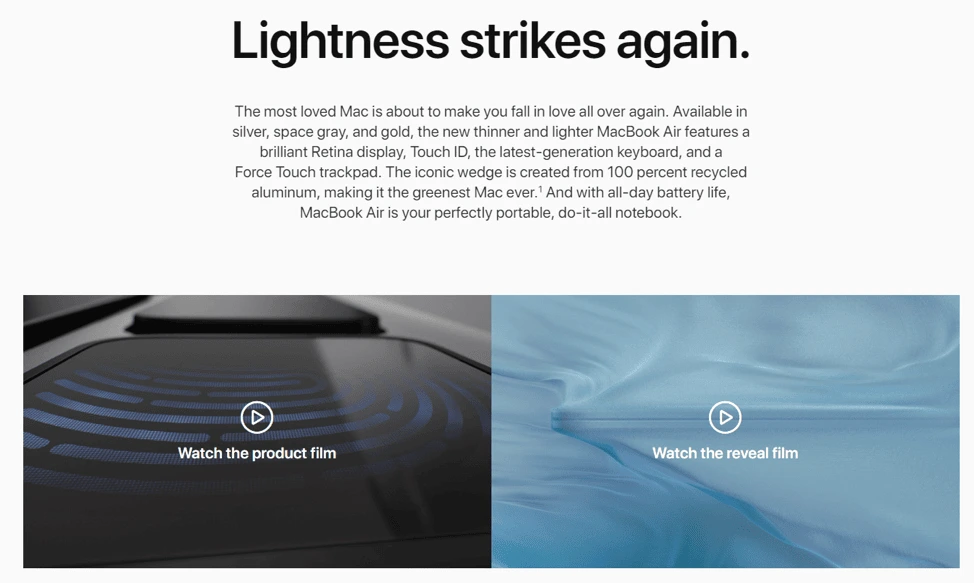
Right away, the copy addresses all the things MacBook Air customers care about:
- Low weight (“Lightness strikes again”)
- New features, especially Retina display
- Environmentally friendly design (“recycled aluminum”)
- Portability and battery life
The repeated use of “again” calls out to current MacBook users, using a bit of nostalgia to entice them to upgrade.
Without a detailed buyer persona, it would’ve been difficult for Apple’s copywriters to know which features to highlight and which to ignore.
This is the true value buyer personas bring to conversion rate optimization. By changing your copy to focus on the things your target audience cares about, you can achieve significantly better conversion rates.
Moreover, accurate personas help you understand your customers’ preferences, from the language & writing style to the visual elements.
If you have detailed buyer personas, you can create personalized landing pages (which convert better) and offer better recommendations to customers.
The question now is: How exactly do you go about creating these buyer personas? I’ll share some ideas below.
Gathering the information
A strong buyer persona is based on data & insight from market research. This first-hand information reveals demographic & psychographic information about your customers.
There are a variety of strategies you can use to collect this information, and here are a few examples.
1. Run surveys
Hosting surveys is a good way to gather information right from the source.
You can either run a survey on your existing customer base or place a pop-up survey on your website for visitors to participate in.
Make sure that you have a large-enough sample size for the data to be accurate. Don’t over-rely on survey results—self-reported data tends to be biased.
You can use software such as Qualtrics, SurveyMonkey or Qualaroo to help you create a survey.
Additionally, consider reaching out to your customer support & sales teams for insight, since they interact with customers on a daily basis.
2. Use your competitors’ data
If you don’t have a large customer base or heavy traffic on your site, you can look to your closest competition.
For example, you might use Google Alerts to know each time your competitor is mentioned online and analyze the source.
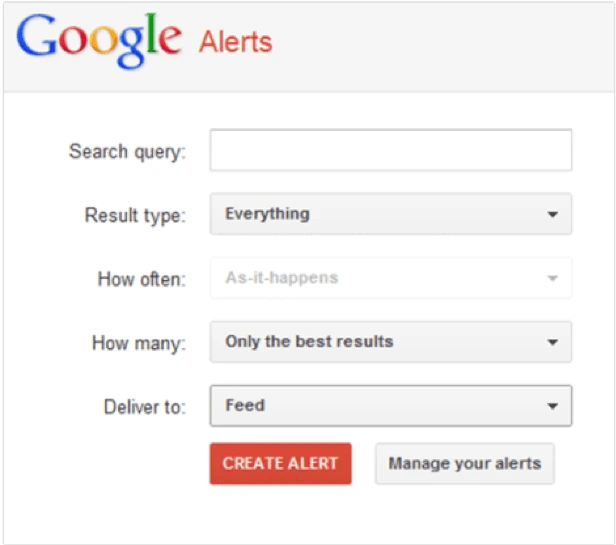
When any mentions pop up, ask yourself:
- Who is writing about my competitor?
- Which other topics, products and issues do they write about?
- What are the demographics of the audience leaving comments or sharing the article?
You can also visit your competitors’ Facebook, Instagram & Twitter pages to see how people interact with their brand (and what those people are like). Pay particular attention to their geographic location, ages and shared interests.
This kind of research is often subjective, but it can still give you a good indication of your competitors’ audiences.
3. Hang out where your customers are
Put yourself in the shoes of your ideal customer.
Hang out where they do and listen to what’s being said. It’s a direct way to discover insights about the language they use and the challenges they face.
You can also read through comments on blogs, hang out on forums, or even attend in-person trade shows and events.
For example, if you’re an athletic shoe brand, you might use Reddit’s search feature to find questions potential customers are asking about running shoes. This can help you zoom in on the problems these customers face and how to address them in your messaging.

Bring your buyer persona to life
Now that you’ve gathered the data, it’s time to make sense of it and bring your ideal customer to life.
Buyer personas are open-ended in terms of what you can or can’t include in them. Virtually anything that helps you understand the customer better is fair game. This includes everything from the customer’s (fictional) background & education to their favorite movies & brands.
Since you’re targeting B2C customers, you can let go of some B2B buyer persona conventions such as including the customer’s title & job duties.
That said, there are a few things every buyer persona should have:
- Name. Give your ideal customer a name to humanize them and make them easier to reference. This can be a first name or a full name; the choice is yours.
- Demographic information. Include basic demographic information about the customer, including their age, location and gender.
- Education level. The complexity of your copy and the features you choose to highlight will often depend on how educated your customers are.
- Background. Create a background story for the buyer. If they already know about your brand, explain how they came to find you.
- Psychographic information. What does the customer like? What do they dislike? Psychographic data can reveal a great deal about your customers, so pay special attention to this section.
- Motivations & values. What motivates your ideal customer? What do they want—from life, from work and from your brand? If you’re a value-based brand, what values will you highlight to appeal to them?
- Picture. Although it’s optional, putting a face to the buyer makes it much easier to visualize them and relate to their problems.
Bring it all together into a single Lucidpress document. You can keep it text-heavy or use a visual design—it’s up to you. For reference, check out this sample buyer persona:
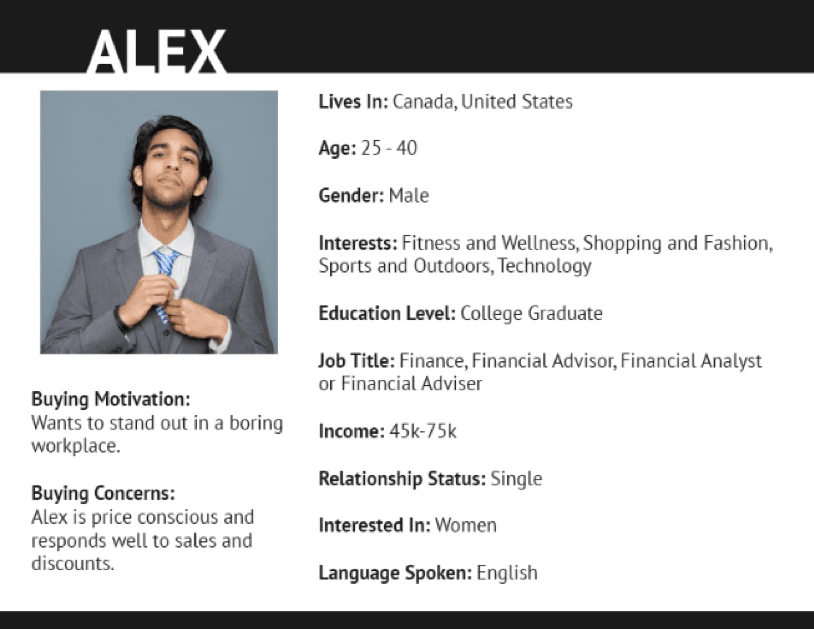
Source: Shopify
Key takeaways
Creating buyer personas helps you speak directly to your customers.
By knowing the traits, values and priorities of your customers, you can craft personalized messaging that feels more relevant to them. The results are highly targeted campaigns with higher conversion rates.
Try it yourself by gathering data on your customers and summarizing it in a well-designed Lucidpress document.